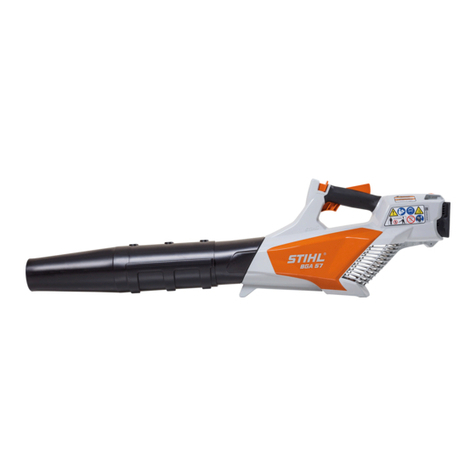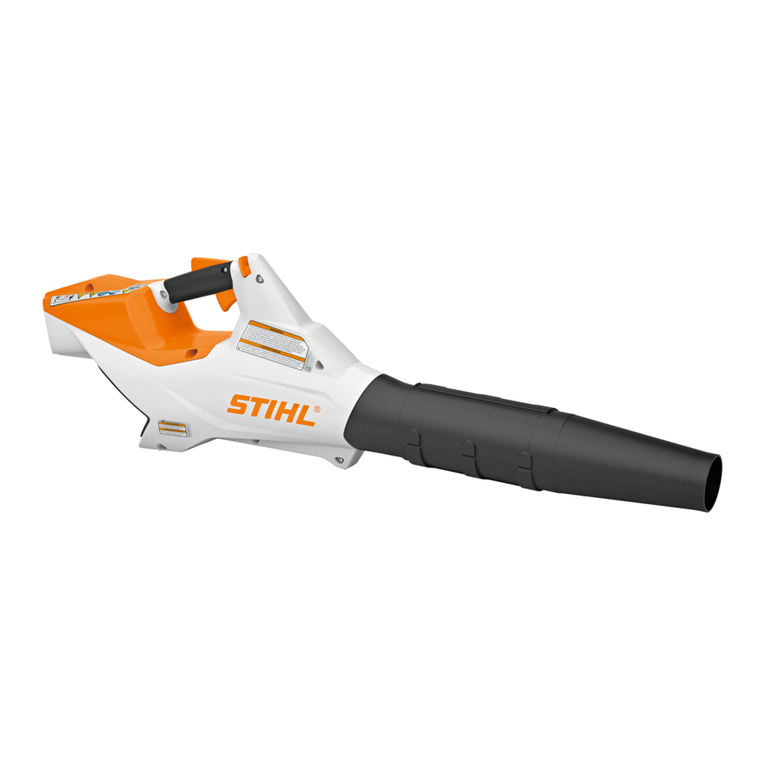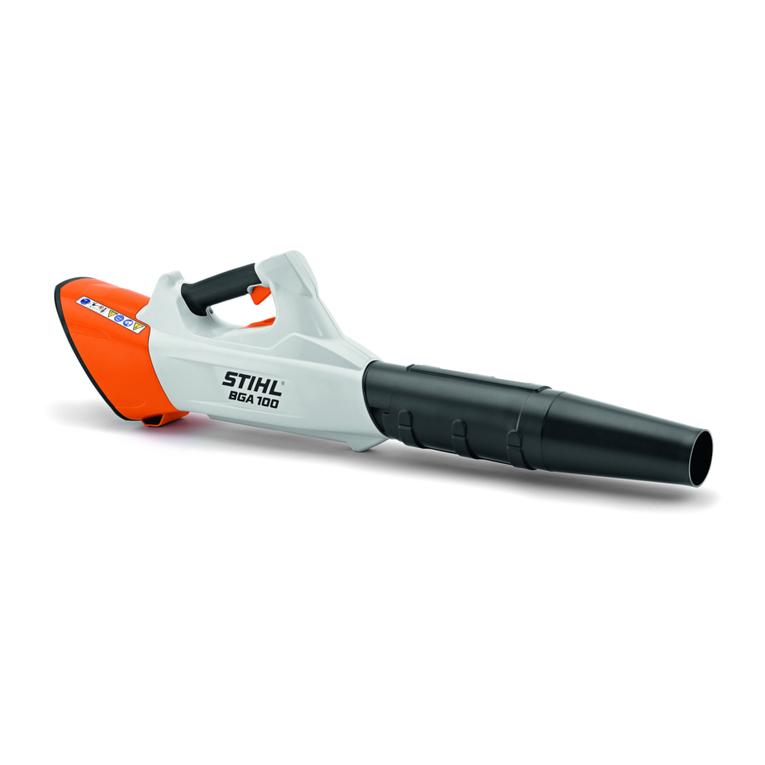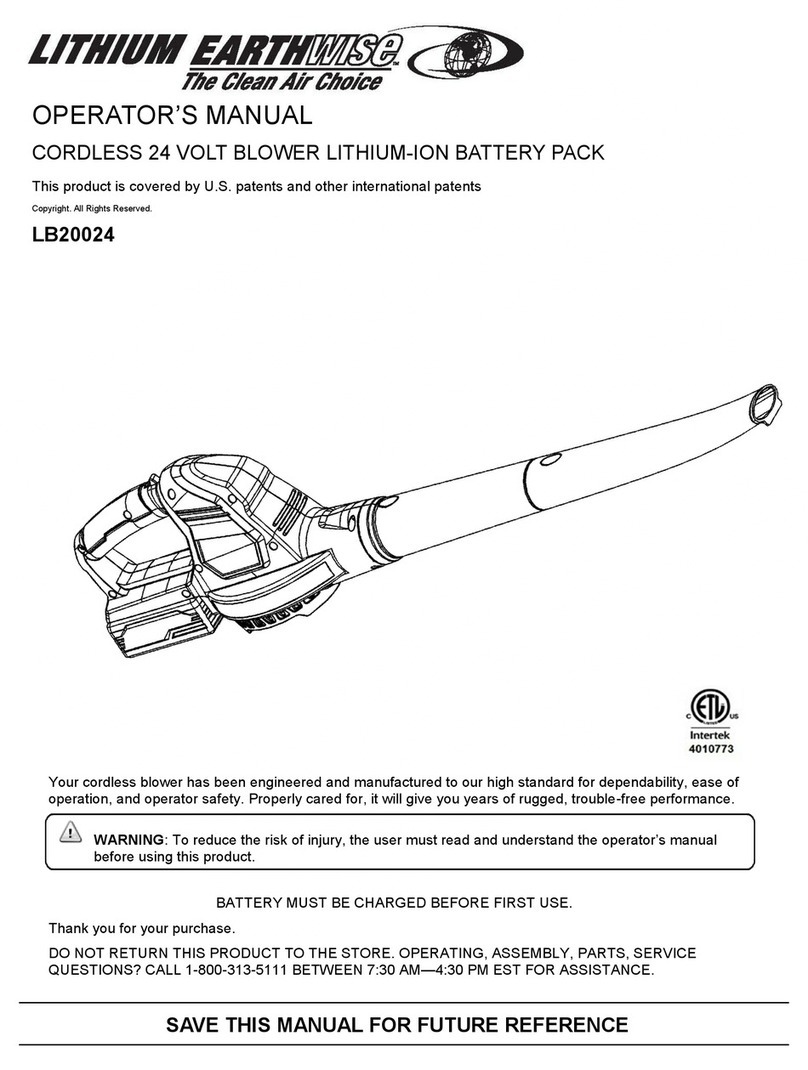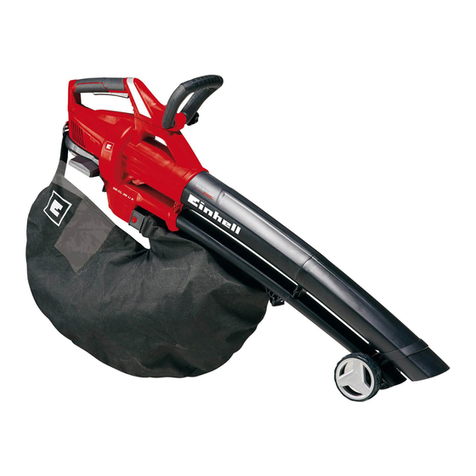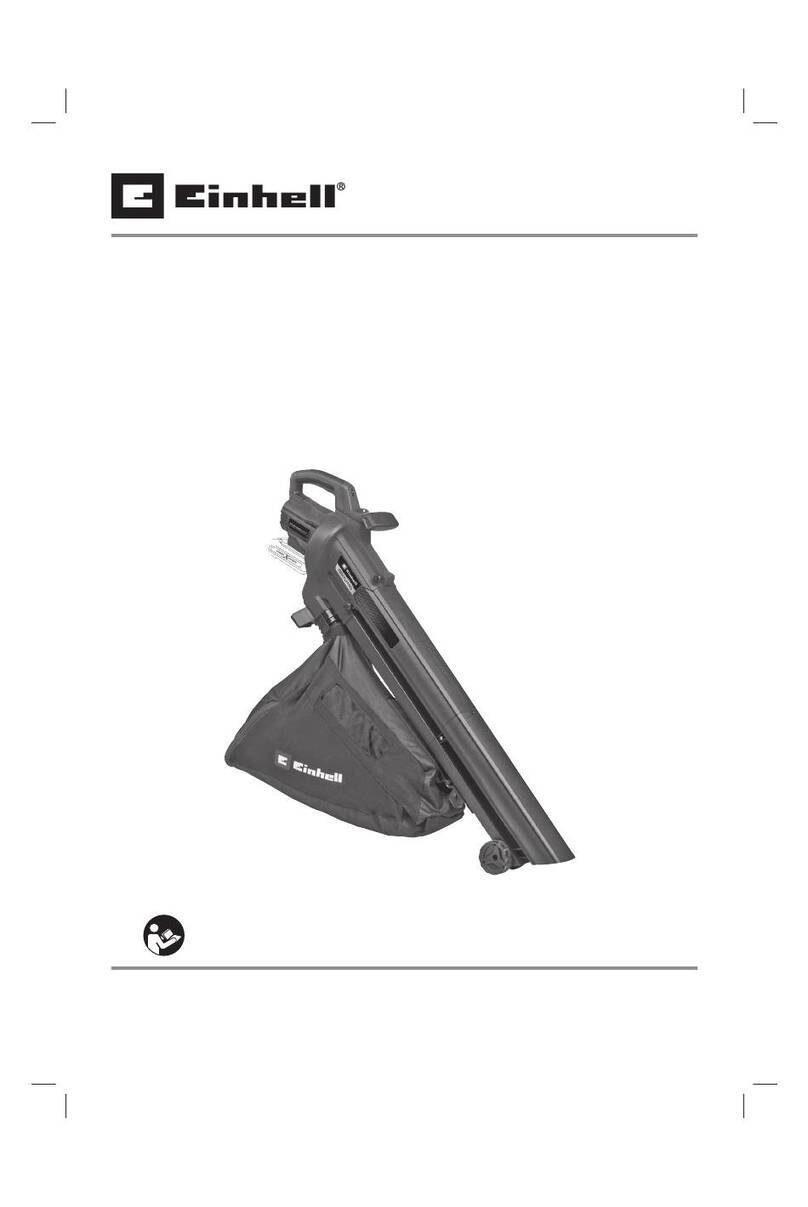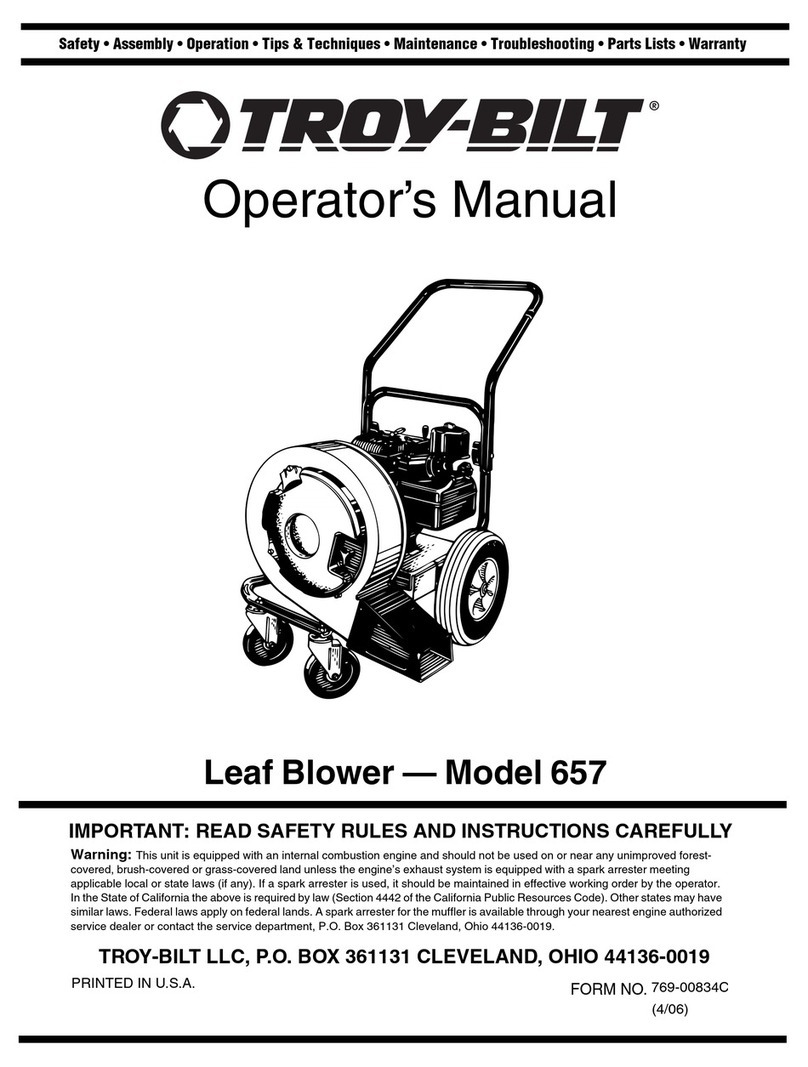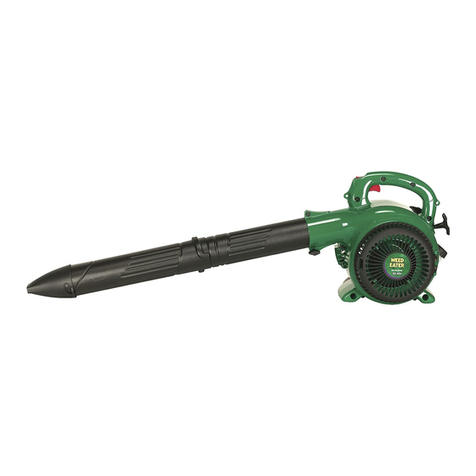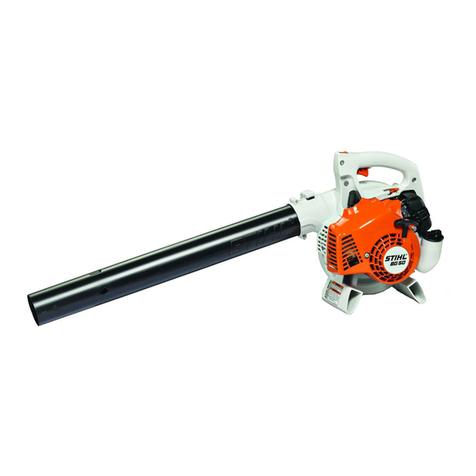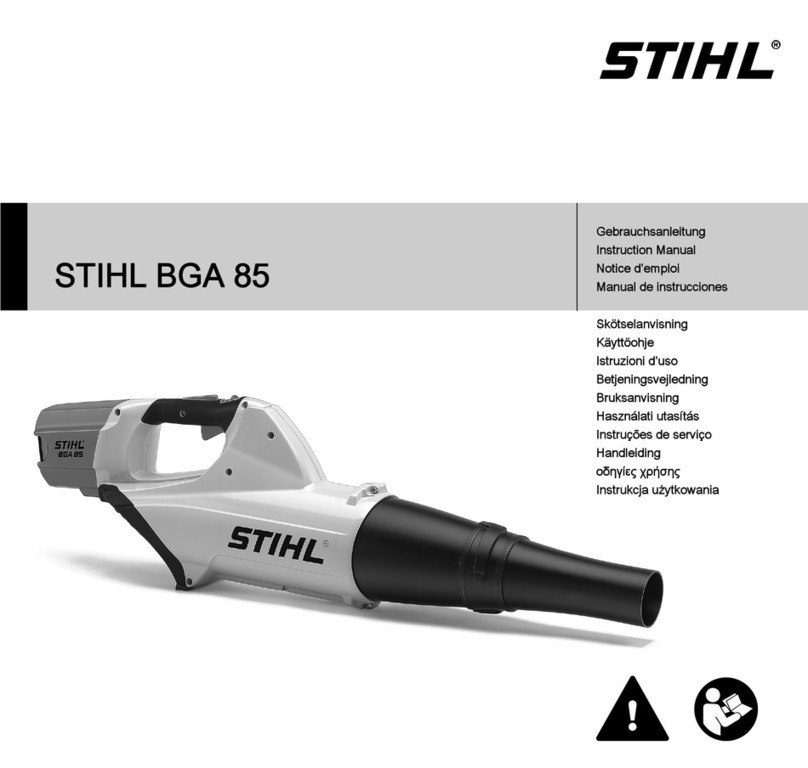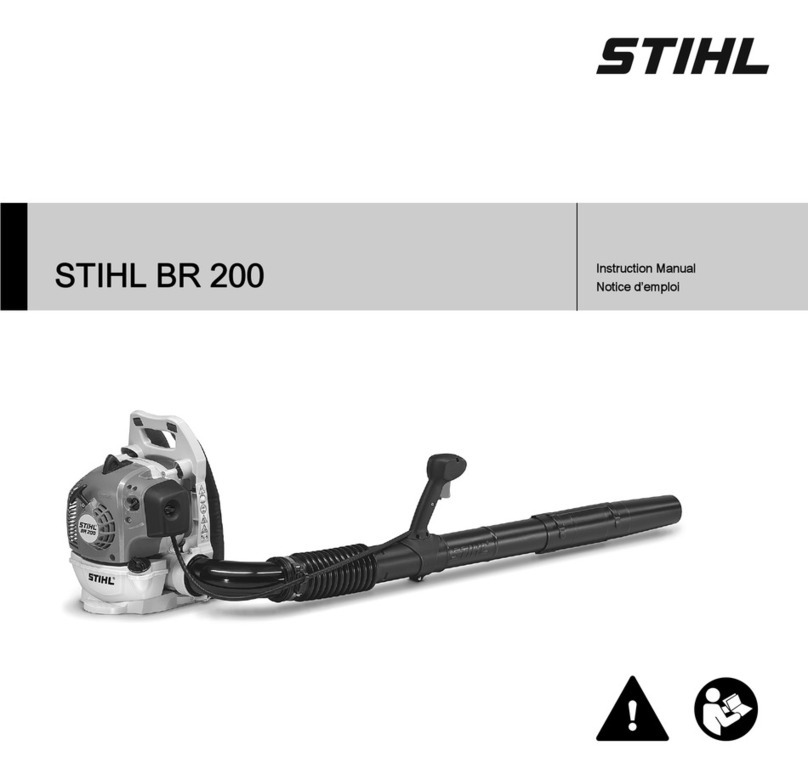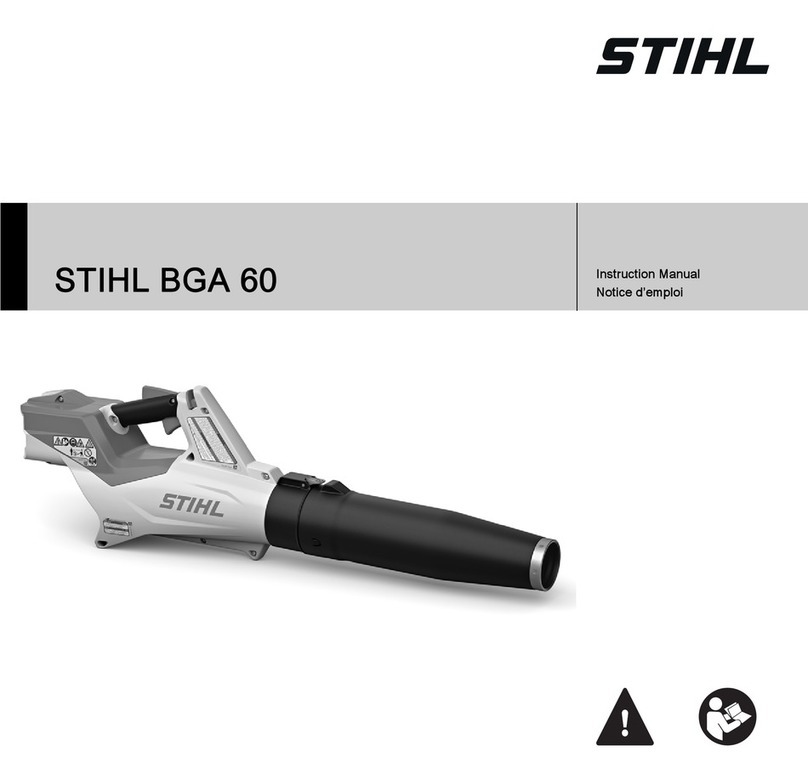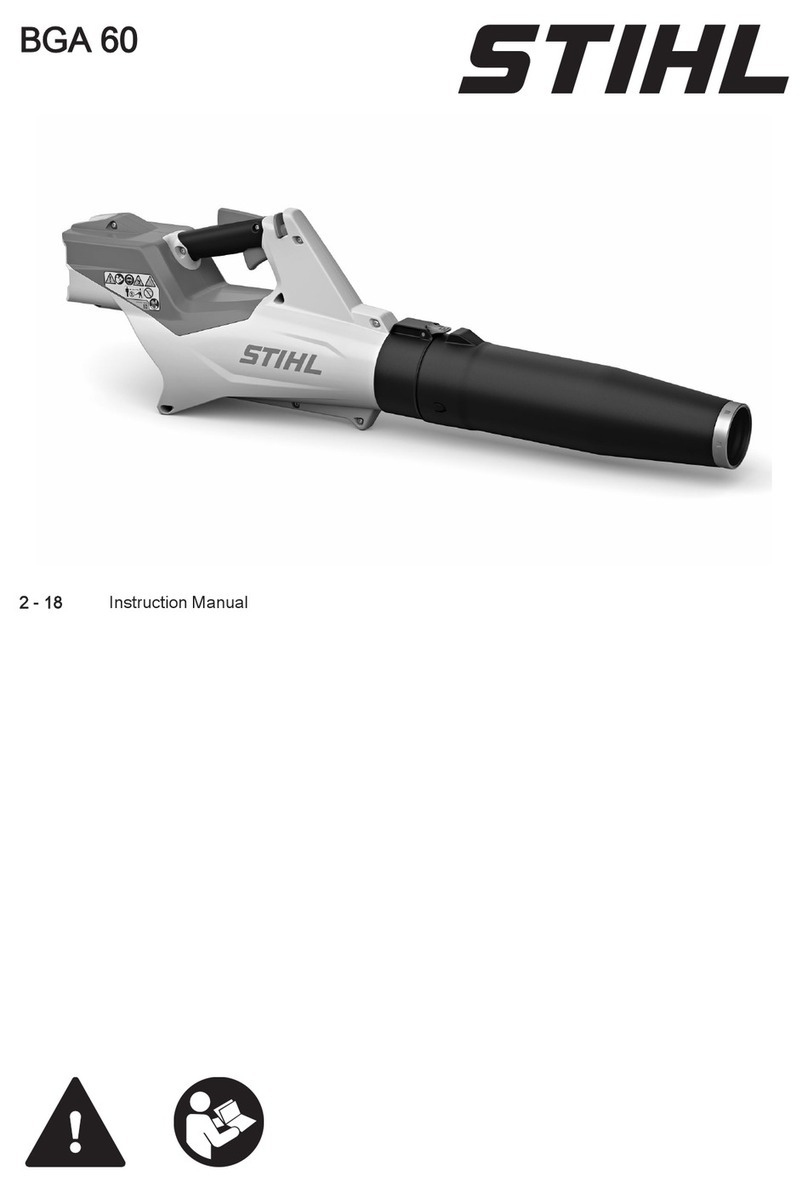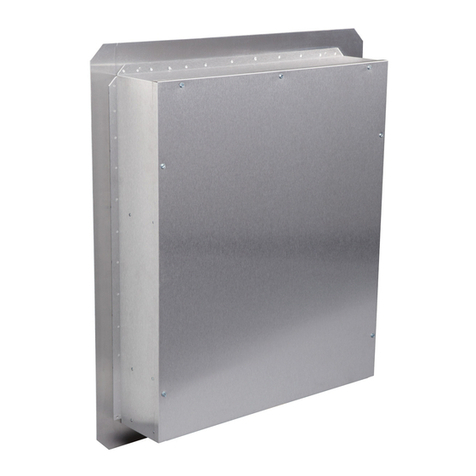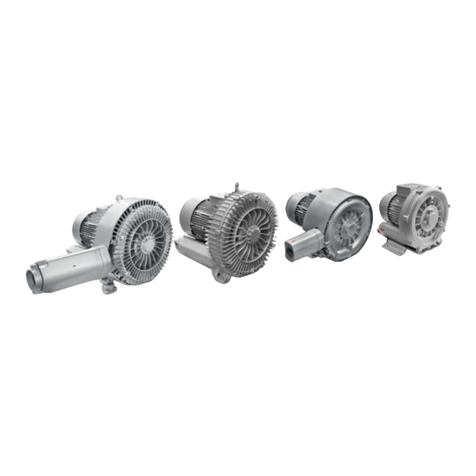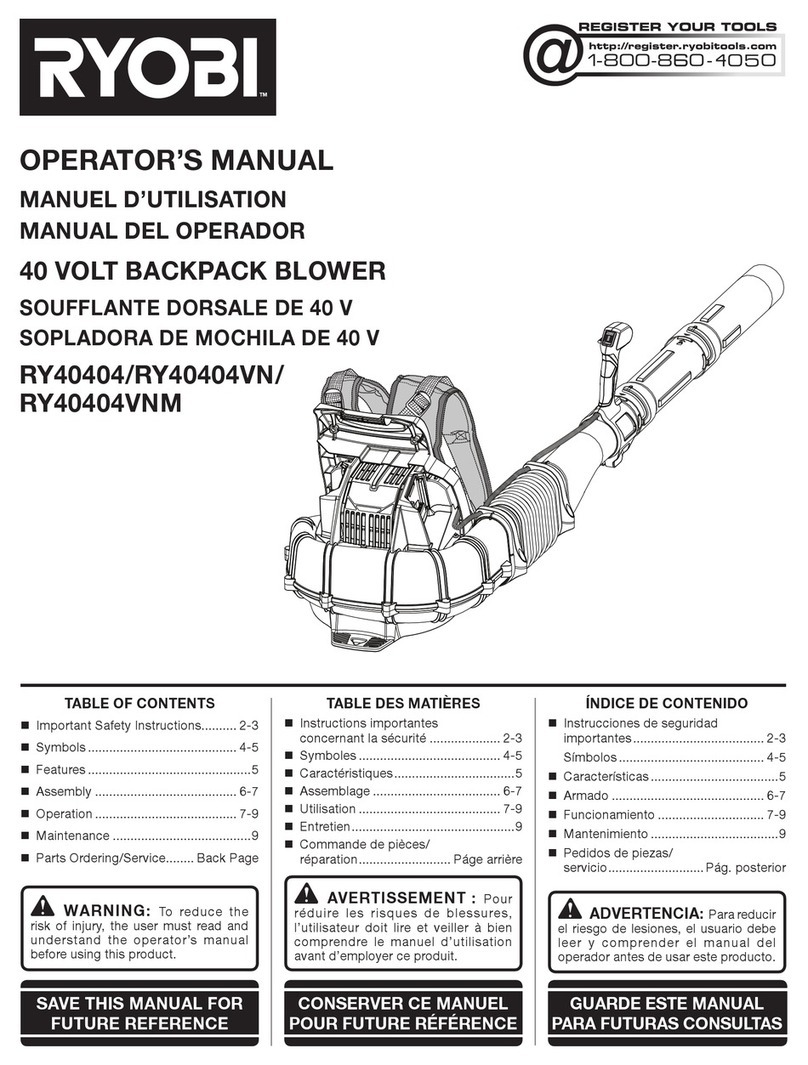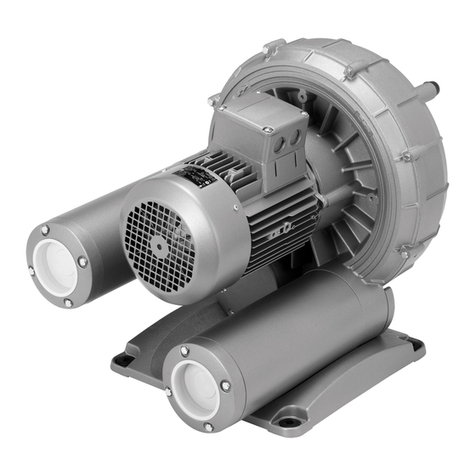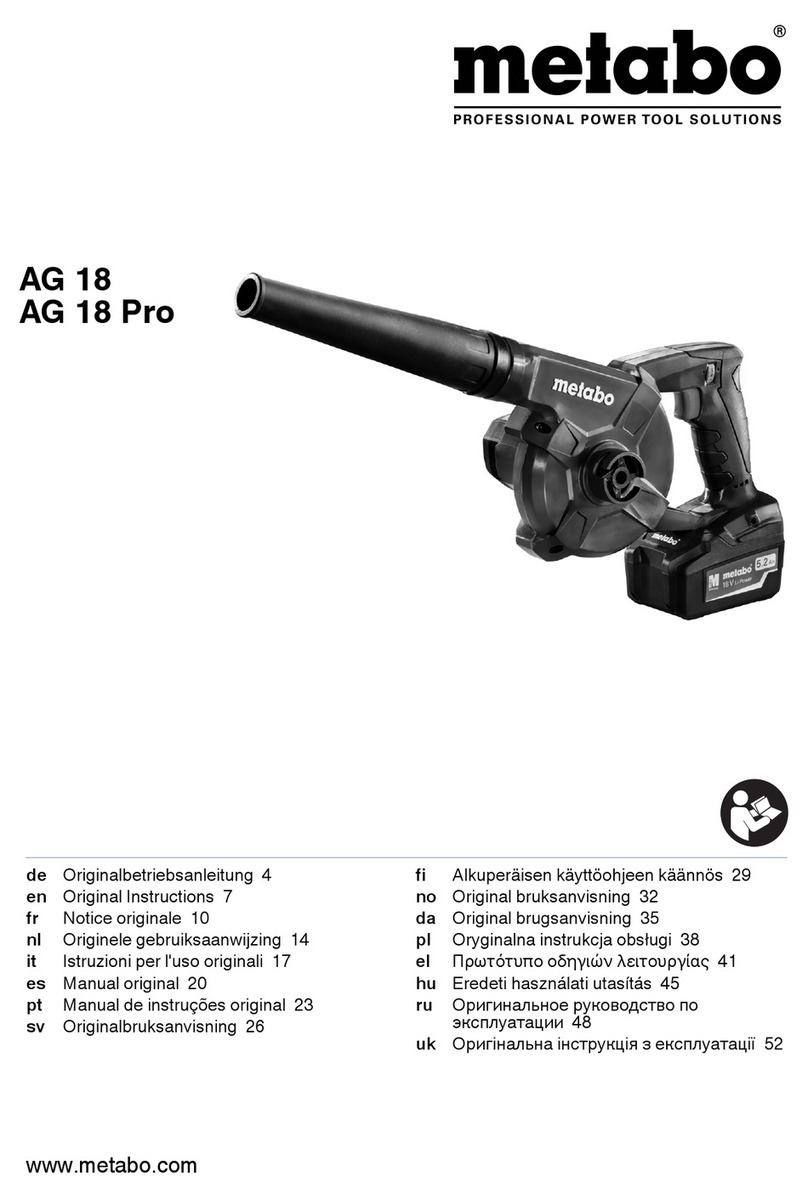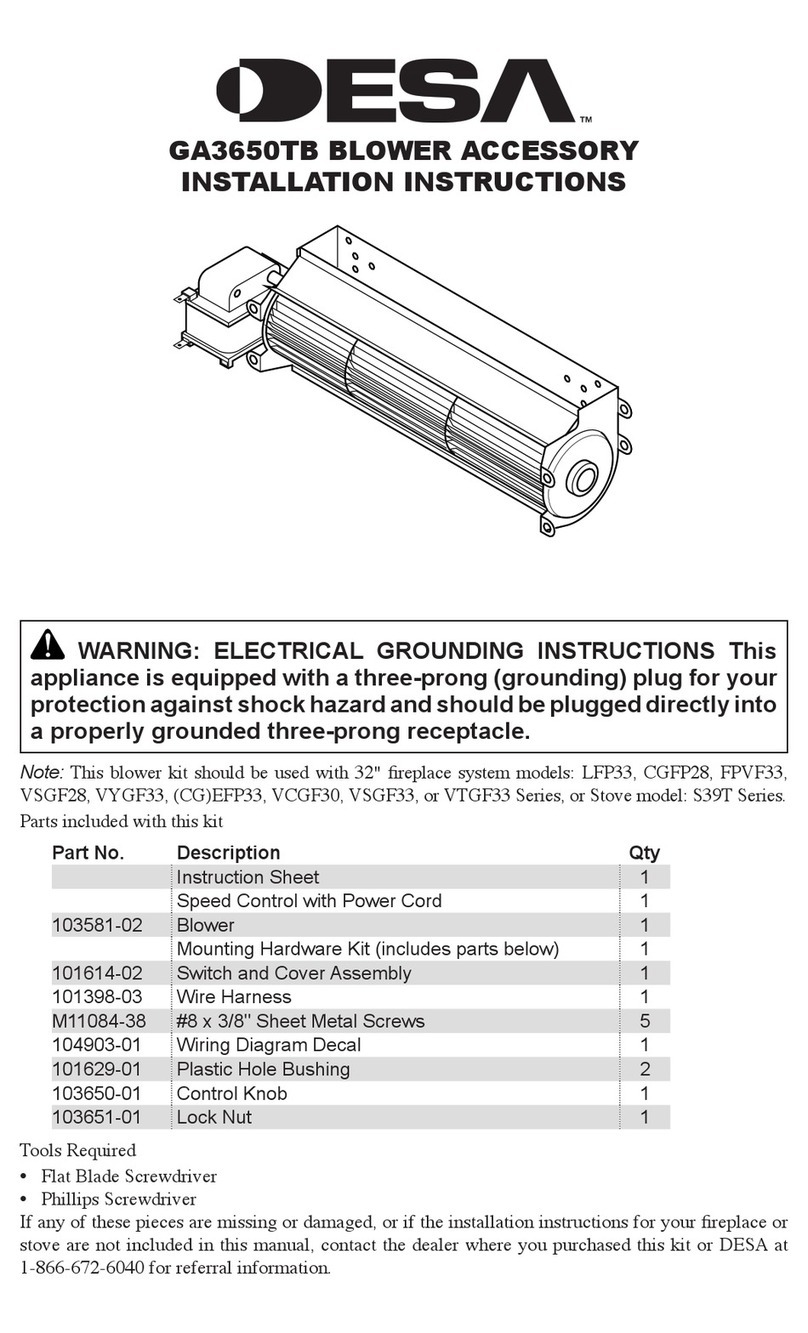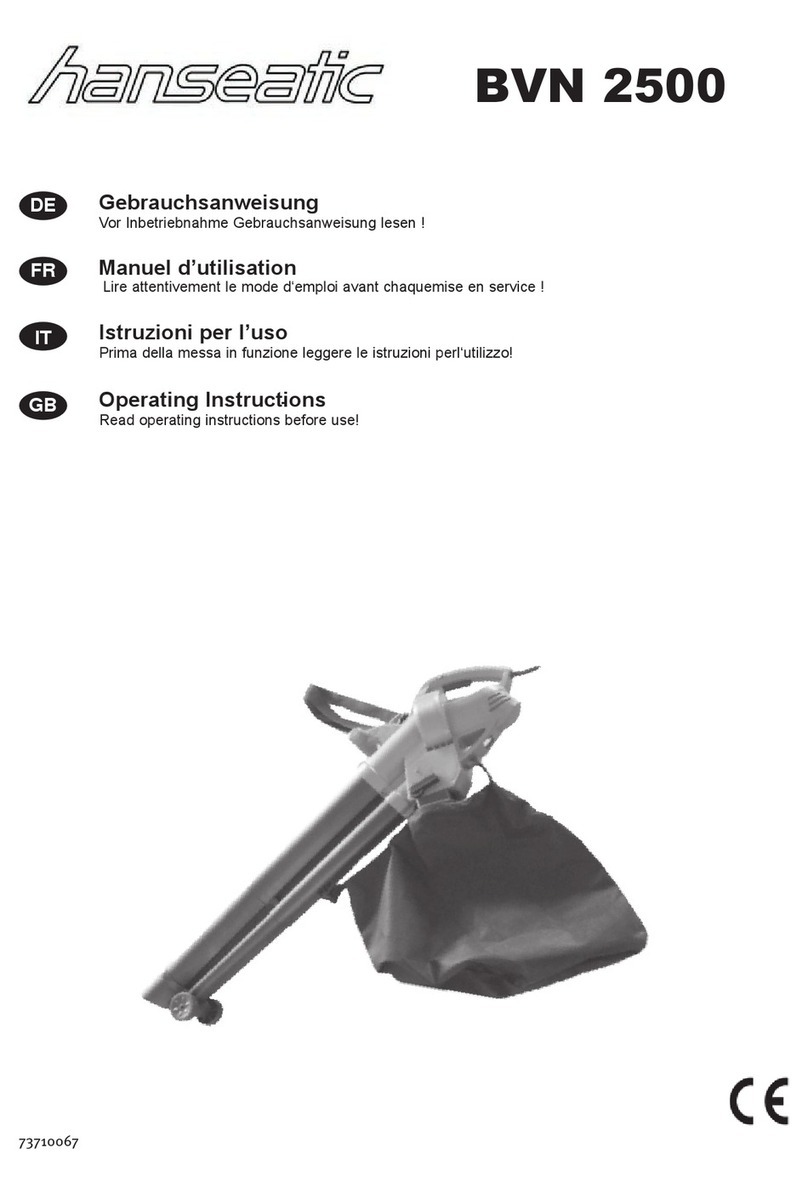
Watch out for obstacles: Be careful of refuse,
tree stumps, roots and ditches which could
cause you to trip or stumble
Do not work on a ladder or in unstable locations.
Be particularly alert and cautious when wearing
hearing protection because your ability to hear
warnings (shouts, alarms, etc.) is restricted.
Work calmly and carefully – in daylight conditions
and only when visibility is good. Proceed with
caution, do not put others in danger.
Take breaks when you start getting tired or feel‐
ing fatigue – risk of accidents!
Mufflers with catalytic converters can become
especially hot.
Your power tool produces toxic
exhaust fumes as soon as the engine
is running. These gases may be odor‐
less and invisible and may contain
unburned hydrocarbons and ben‐
zene. Never run the engine indoors or
in poorly ventilated locations, even if
your model is equipped with a cata‐
lytic converter.
To reduce the risk of serious or fatal injury from
breathing toxic fumes, ensure proper ventilation
when working in trenches, hollows or other con‐
fined locations.
Stop work immediately if you start suffering from
nausea, headaches, impaired vision (e.g. your
field of vision gets smaller), impaired hearing,
dizziness, or impaired concentration – these
symptoms may possibly be the result of too-high
exhaust gas concentration – Risk of accidents!
To reduce the risk of fire, do not smoke while
operating or standing near your power tool. Com‐
bustible fuel vapor may escape from the fuel sys‐
tem.
Always wear a dust mask if dust is generated.
Operate your power tool so that it produces a
minimum of noise and emissions – do not run the
engine unnecessarily, accelerate the engine only
when working.
After work, place the machine on a level, non-
flammable surface. Do not place the machine
near easily flammable materials (e.g. wood
chips, bark, dry grass, fuel) – risk of fire!
If the machine was exposed to a load for which it
was not designed (e.g. heavy impact or a fall),
always check that it is in good condition before
continuing work – see also "Before Starting".
Check in particular that the fuel system has no
leaks and the safety equipment is fully operative.
Do not continue operating your power tool if it is
damaged. In case of doubt, contact a dealer.
2.10 Using the blower
The unit is carried as a backpack. Hold and con‐
trol the blower tube with your right hand on the
control handle.
Work only slowly, moving in a forwards direction
– always observe the discharge area of the
blower tube – do not move backwards – risk of
tripping!
Always shut off the engine before taking the
machine off your back.
2.11 Working Technique
To minimize blowing time, use a rake and broom
to loosen dirt particles before you start blowing.
–If necessary, dampen the surface to be
cleaned in order to avoid creating too much
dust.
–Do not blow particles in the direction of
bystanders, in particular in the direction of chil‐
dren, pets, open windows or freshly washed
vehicles. Take special care in such situations.
–Remove the blow-swept debris in rubbish bins
– do not blow it onto the neighbor's land.
–Operate your power tool at reasonable times
only – not early in the morning, late at night or
during midday rest periods when people could
be disturbed. Observe local rest periods.
–Operate blowers at the lowest engine speed
necessary to accomplish the task.
–Check your blower before starting work. Pay
special attention to the muffler, air intakes and
air filter.
2.12 Vibrations
Prolonged use of the power tool may result in
vibration-induced circulation problems in the
hands (whitefinger disease).
2 Safety Precautions and Working Techniques English
0458-455-0121-D 5
